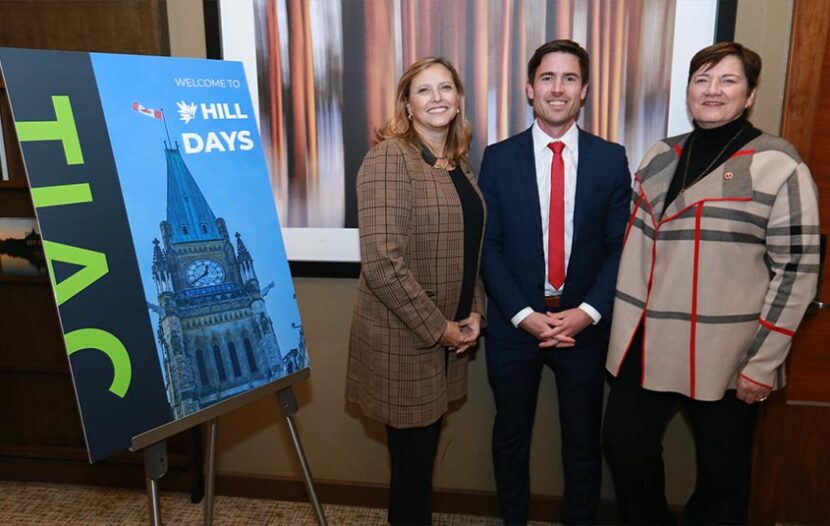OTTAWA — The Tourism Industry Association of Canada (TIAC) marked its first in-person Hill Days advocacy campaign in two years last week, kicking off with a reception in downtown Ottawa at the Wellington Building.
More than 60 TIAC members gathered with 50 Parliamentarians and other government officials at an evening event that was the social highlight of the organization’s annual lobbying campaign. This year, TIAC aims to raise awareness of the key challenges now faced by the beleaguered industry as it emerges from the COVID-19 pandemic.
“Despite some improvement over the last few months, tourism businesses continue to struggle financially, face barriers to attracting investment, and have considerable challenges attracting and retaining the necessary workforce to run their operations,” says Beth Potter, President and CEO of TIAC.
Among those challenges hampering tourism’s recovery are disruptions to supply chains, a worsening labour shortage, inflation at a 40-year high, and rising interest rates. “As the industry first hit and hardest hit (by the pandemic), these obstacles require strong public sector support to stimulate the most robust recovery of our suite of sectors,” she says.
Prior to COVID-19, tourism was one of the fastest growing sectors in the world. As one of Canada’s largest sectors, tourism was responsible for $105 billion worth of total spending, supported 1 in 10 Canadian jobs, and was made up of 225,000 small- and medium-sized businesses across Canada. With the removal of the last COVID-19 travel restrictions earlier this month, Canada’s visitor economy is in a much better place to build forward. The association has set an aim to recover by the end of 2025, and to position it for strong growth thereafter.
However, the latest research indicates that the road ahead will not be easy, as Potter notes. While the labour force continues to grow from its unprecedented lows during the COVID-19 pandemic, the total tourism labour force remains 203,000 workers short (or -9.2%) of the level it had in May 2019; according to Tourism HR Canada. Meanwhile, the Conference Board of Canada’s latest travel report states that total overnight overseas visits are not expected to fully surpass their pre-pandemic level until 2026.
In its recent submission to guide the federal government in its development of a new Tourism Growth Strategy, TIAC outlined key priorities to help tourism rebuild from the pandemic and position it for growth in the face of these challenges. In it, the association recommended several key targets to be achieved by 2030, related to tourism spending, dispersion, workforce, international overnight visitors, and our global competitive position.
To meet those goals, TIAC proposed a plan centred on four key pillars of action:
- Attract and retain a sustainable tourism workforce
- Improve access for visitors to and within Canada
- Develop and promote tourism assets, and
- Build a regenerative and inclusive tourism industry
These four pillars figured prominently in the organization’s Hill Days discussions last week, as its Government Relations team and members from across the country met with MPs, Senators and other officials to discuss the way forward.
“We have a plan, but we need help,” says Potter. “We’re urging TIAC Members and the industry-at-large to help us amplify our message to the government.”
To get involved, visit the campaign’s website tiac-aitc.ca/hilldays2022.html and share the images and messages provided there on social media channels.

